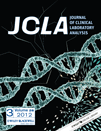
JOURNAL OF CLINICAL LABORATORY ANALYSIS
Scope & Guideline
Innovating methodologies for the future of laboratory science.
Introduction
Aims and Scopes
- Clinical Diagnostics and Biomarkers:
The journal emphasizes research on novel biomarkers and diagnostic techniques, particularly those that enhance the accuracy and efficiency of disease detection and monitoring. - Molecular Diagnostics and Genomics:
There is a significant focus on molecular methods, including next-generation sequencing and PCR techniques, for the diagnosis of various genetic and infectious diseases. - Laboratory Methodologies and Quality Control:
The journal includes studies evaluating and optimizing laboratory methodologies, emphasizing the importance of quality control in clinical laboratories. - Therapeutic Monitoring and Drug Response:
Research related to the monitoring of therapeutic drug levels and responses in various patient populations is a key area, particularly in chronic diseases and cancer. - Infectious Disease Diagnostics:
Given the ongoing global health challenges, the journal frequently publishes articles related to the rapid diagnosis and management of infectious diseases, including COVID-19. - Clinical Applications of Artificial Intelligence:
Emerging trends in the application of artificial intelligence and machine learning in laboratory diagnostics are increasingly highlighted, showcasing innovative approaches to enhance clinical decision-making.
Trending and Emerging
- Integration of Artificial Intelligence in Diagnostics:
There is a marked increase in research focusing on the application of artificial intelligence and machine learning to improve diagnostic accuracy and efficiency in laboratory settings. - Liquid Biopsy and Circulating Biomarkers:
The trend towards utilizing liquid biopsies and circulating biomarkers for cancer diagnosis and monitoring is gaining momentum, highlighting the shift towards less invasive diagnostic methods. - Point-of-Care Testing Innovations:
Emerging technologies for point-of-care testing are increasingly featured, emphasizing the need for rapid and accessible diagnostic solutions in various clinical settings. - Microbiome Research:
Studies exploring the role of the microbiome in health and disease are on the rise, indicating a growing interest in understanding the complex interactions between microbiota and clinical outcomes. - Personalized Medicine and Pharmacogenomics:
There is an increasing focus on the role of pharmacogenomics in personalized medicine, with research aimed at tailoring treatments based on individual genetic profiles. - COVID-19 Related Research:
The impact of the COVID-19 pandemic is reflected in a surge of studies related to diagnostics, treatment monitoring, and understanding the long-term effects of the virus, showcasing the journal's responsiveness to global health challenges.
Declining or Waning
- Traditional Biochemical Assays:
There has been a noticeable decline in studies solely focused on traditional biochemical assays, as newer technologies and methodologies gain traction in laboratory diagnostics. - Basic Hematology Studies:
Research centered on fundamental hematological parameters seems to be less frequent, possibly due to the development of more sophisticated diagnostic tools and techniques. - Single-Center Studies:
The prevalence of studies conducted in single-center settings appears to be decreasing, with a growing emphasis on multicenter collaborations and large-scale studies to enhance generalizability. - Histopathology-Based Diagnoses:
The journal has seen a decline in articles focused purely on histopathological methods, as molecular and genetic approaches become more dominant in diagnostic pathology. - Non-Clinical Laboratory Studies:
There is a waning interest in studies that do not directly relate to clinical applications or laboratory practices, as the journal increasingly prioritizes research with direct clinical implications.
Similar Journals

Biochemia Medica
Exploring the Intersections of Biochemistry and MedicineBiochemia Medica is a premier open-access journal that has been at the forefront of advancing knowledge in the fields of medical biochemistry and laboratory medicine since its inception in 2006. Published by the Croatian Society of Medical Biochemistry & Laboratory Medicine, this journal serves a vital role in disseminating high-quality research findings and reviews that contribute to the understanding of biochemical processes in health and disease. With an impressive performance in the Scopus ranking, it holds a Q2 quartile category in both medical biochemistry and clinical biochemistry for 2023, reflecting its commitment to scholarly excellence and relevance in the field. As an open-access journal, Biochemia Medica ensures that research is freely accessible, fostering collaboration and innovation among researchers, healthcare professionals, and students globally. Positioned within a rapidly evolving scientific landscape, this journal is dedicated to bridging the gap between laboratory research and clinical application, making it an indispensable resource for anyone interested in the intersections of biochemistry and medicine.

JOURNAL OF BIOMEDICAL SCIENCE
Leading the way in biomedical research and collaboration.JOURNAL OF BIOMEDICAL SCIENCE, published by BMC, is a premier Open Access journal dedicated to the rapid dissemination of research in the fields of biomedical science, encompassing crucial areas such as biochemistry, cell biology, clinical biochemistry, and more. Since its inception in 1993, the journal has established itself as a leading publication, currently boasting a remarkable impact factor and quality as evidenced by its Q1 quartile rankings across multiple categories in 2023. With an impressive track record, including a Scopus ranking in the top percentiles across several disciplines, it serves as a vital resource for researchers, professionals, and students who are keen on advancing their knowledge in biomedicine. The journal operates under a fully Open Access model, ensuring that all published articles are freely available to the global research community, thus contributing to the broader dissemination and accessibility of scientific knowledge. Based in the United Kingdom, JOURNAL OF BIOMEDICAL SCIENCE is committed to fostering innovation and collaboration in research, appealing to those aiming to make impactful contributions to the biomedical sphere.
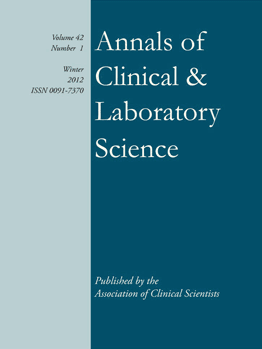
ANNALS OF CLINICAL AND LABORATORY SCIENCE
Pioneering Insights in Biochemistry and HematologyANNALS OF CLINICAL AND LABORATORY SCIENCE, published by the Association of Clinical Scientists, is a pivotal journal in the fields of clinical biochemistry, hematology, immunology, and medical laboratory technology. Since its inception in 1971, this journal has become a vital resource for researchers and practitioners aiming to advance their knowledge and skills in laboratory sciences. Although currently not an open access journal, its rich repository of peer-reviewed articles and studies contributes significantly to the academic discourse in diagnostic and therapeutic practices. The journal is categorized in various quartiles, reflecting its impact and contributions to multiple scientific domains, such as Q4 in Clinical Biochemistry and Q3 in Pathology and Forensic Medicine as of 2023. With an extensive convergence of years up to 2024, it proves to be a timeless source for emerging trends and research innovations. The ANNALS OF CLINICAL AND LABORATORY SCIENCE not only supports the professional development of its readers but also encourages interdisciplinary collaboration, making it an essential tool for professionals, students, and researchers dedicated to improving health outcomes through advanced laboratory sciences.
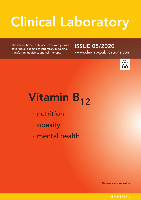
Clinical Laboratory
Innovating Insights in Laboratory MedicineClinical Laboratory is a reputable journal dedicated to the interdisciplinary field of clinical biochemistry, genetics, and molecular biology. Published by CLIN LAB PUBL in Germany, this journal provides a platform for the dissemination of original research, reviews, and key insights into laboratory practices and innovations that play a crucial role in modern medicine and diagnostics. With an ISSN of 1433-6510 and a consistent publication history since its inception in 1964 and converging through 2024, it is indexed within the Scopus database, ranking in the 30th percentile among its peers. Although classified in the third quartile for 2023 in the field, Clinical Laboratory continues to contribute valuable knowledge and fosters collaboration among researchers, professionals, and students. Notably, it does not currently operate as an Open Access journal, which emphasizes its commitment to maintaining high-quality peer-reviewed content accessible through institutional and library subscriptions. For those in the domain, Clinical Laboratory serves as a vital resource for the latest advancements and trends shaping the future of clinical laboratory science.

African Journal of Laboratory Medicine
Enriching public health through shared knowledge.The African Journal of Laboratory Medicine, ISSN 2225-2002, e-ISSN 2225-2010, is a premier publication dedicated to advancing the field of laboratory medicine within the African context. Published by AOSIS since 2012, this Open Access journal aims to disseminate influential research findings, clinical studies, and innovative techniques in the realms of Clinical Biochemistry, Medical Laboratory Technology, and Public Health. Based in South Africa, the journal not only serves as a critical platform for sharing knowledge and best practices but also plays a significant role in fostering public health discussions relevant to the continent. Over the years, it has established itself with impactful rankings in various categories, including a Q4 in Clinical Biochemistry and Q3 in both Medical Laboratory Technology and Public Health. As such, it caters to a diverse audience of researchers, professionals, and students eager to stay at the forefront of laboratory medicine research and its applications. The journal’s commitment to quality and accessibility positions it as an essential resource for those looking to make a significant impact in their respective fields.
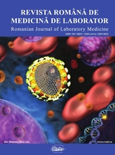
Revista Romana de Medicina de Laborator
Innovating Insights in Medical Laboratory TechnologyRevista Romana de Medicina de Laborator is a prominent open-access journal published by SCIENDO, dedicated to the field of medical laboratory technology and biochemistry. Since its inception, this journal has been a vital platform for disseminating research findings and advancements in laboratory medicine. With an ISSN of 1841-6624 and E-ISSN 2284-5623, it has served the academic community since 2008 and has embraced an open-access model since 2013, ensuring that valuable research is accessible to all. While it features niche rankings in Scopus for areas such as Medical Laboratory Technology and Clinical Biochemistry, it consistently strives to engage researchers, professionals, and students. Its rich collection of articles highlights innovative techniques and methodologies, supporting the ongoing development of laboratory practices. Although its coverage in Scopus has been discontinued, the journal continues to publish high-quality studies that contribute significantly to the field, fostering knowledge exchange essential for advancing medical science.
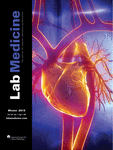
AMERICAN JOURNAL OF CLINICAL PATHOLOGY
Catalyzing Innovations in Pathology and Forensic MedicineThe American Journal of Clinical Pathology, published by Oxford University Press Inc, stands as a vital resource in the fields of pathology and clinical medicine. With a rich history dating back to 1945 and an impressive impact factor reflected in its Q1 ranking in Pathology and Forensic Medicine, this journal serves as a cornerstone for researchers and professionals seeking to advance their knowledge and practice. Covering a breadth of topics within the discipline, it is recognized in 2023 as ranked #24 out of 208 in its category, highlighting its esteemed reputation within the scientific community. Although the journal does not currently offer open access, its rigorous peer-reviewed articles and cutting-edge research make it an essential addition to any academic or clinical library. The ISSN for print version is 0002-9173, with an E-ISSN of 1943-7722 available for digital access. Researchers, students, and practitioners alike will benefit from its comprehensive scope and commitment to disseminating high-quality scientific inquiry.
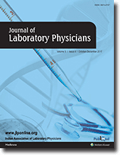
Journal of Laboratory Physicians
Elevating healthcare with cutting-edge laboratory insights.The Journal of Laboratory Physicians is a prestigious, peer-reviewed publication dedicated to advancing the field of laboratory medicine. Published by THIEME MEDICAL PUBL INC, this journal has established itself as a vital source of research and clinical insights since its inception, transitioning to Open Access in 2009 to broaden its reach and accessibility. With an ISSN of 0974-2727 and an E-ISSN of 0974-7826, it aims to provide a platform for professionals, researchers, and students engaged in laboratory-based studies to share critical findings and foster collaboration across disciplines. The journal's scope encompasses a wide range of topics relevant to laboratory physicians, ensuring that it remains an essential resource for those seeking to stay on the cutting edge of laboratory practices and innovations. By disseminating timely research and reviews, the Journal of Laboratory Physicians plays a crucial role in enhancing the quality of healthcare through improved laboratory services.
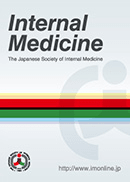
Internal Medicine
Bridging Research and Practice in Internal MedicineInternal Medicine is a distinguished peer-reviewed journal published by the Japan Society of Internal Medicine, focusing on the nuanced field of internal medicine. Since its inception in 1974 and with a commitment to advancing medical knowledge, the journal has evolved remarkably, aiming to disseminate high-quality research that contributes to the understanding and treatment of internal diseases. Operating from Tokyo, Japan, it provides an intellectual platform for researchers and clinicians to publish original articles, reviews, and case studies that address various aspects of internal medicine. The journal currently holds a ranking in the Q3 quartile for both Internal Medicine and miscellaneous Medicine categories as of 2023, signifying its growing influence in the medical community. Although not an open-access journal, it remains accessible to a wide audience through institutional subscriptions, enhancing its reach among professionals and students alike. With its commitment to excellence, Internal Medicine serves as an essential resource for those seeking the latest developments and research within this vital medical field.
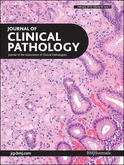
JOURNAL OF CLINICAL PATHOLOGY
Advancing the Future of Clinical InsightsJOURNAL OF CLINICAL PATHOLOGY, published by BMJ PUBLISHING GROUP, stands at the forefront of advancements in the field of clinical pathology, offering a platform for groundbreaking research and insights from 1948 to the present. With an impressive impact factor and categorized as Q1 in both Medicine (miscellaneous) and Pathology and Forensic Medicine for 2023, the journal holds a distinguished position in the academic community, ranking 22nd out of 208 journals in its category on Scopus and representing the 89th percentile. While the journal does not currently offer open access, it remains a vital resource for researchers, healthcare professionals, and students seeking to stay current with innovative methodologies, clinical techniques, and diagnostic advancements. Located in London, United Kingdom, the journal aims to bridge the gap between laboratory findings and clinical practice, emphasizing the importance of evidence-based pathology in improving patient care and treatment outcomes. Engage with the JOURNAL OF CLINICAL PATHOLOGY to enhance your understanding and contribute to the evolving landscape of clinical pathology research.